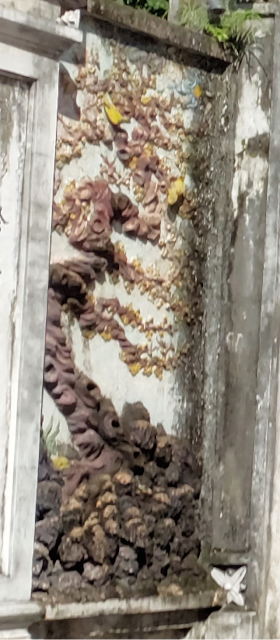While walking back from One Pillar Pagoda and Ho Chi Minh Mausoleum to Tran Quoc pagoda, we saw this temple. While taking a note of places to visit in Hanoi, I probably missed Quán Thánh Temple. I am happy I went inside.
It is an old Taoist temple dating back to 11th century.
Taoist temple
History:
- Made in the 11th century, Quán Thánh Temple also known as Tran Vu Temple is a Taoist temple in Hanoi.
- It is dedicated to Xuan Wu or Huyen Thien Tran Vu in Vietnamese, who is one of the principal deities in Taoism.
- Situated near West Lake, this is one of the Four Sacred temples of Hanoi situated in four directions. Quan Thanh temple protects in the north, Voi Phuc temple in west, Kim Lien temple in south and Bach Ma temple in the east.
- Emperor Lý Thái Tổ who was the founding emperor of the Ly dyansty ruled from 1010-1028.
- he shifted the capital to Hanoi got the temple constructed dedicating it to Trần Vũ. It was moved to its present position in 1474.
- Quán Thánh temple has been renovated may times and reflects the different time periods.
Outside the main entrance are four pillars decorated by phoenix on top of central pillars and nghe on side pillars. Embossed tiger adorn below rahu images on both sides.
pillar in front of the temple with Rahu, an influence of Hinduism during that period
3-gate entrance which was built on large stone slabs
The central archway is the biggest flanked by two smaller arches on the sides. On top of the central archway is Rahu, the Indian god to protect people who enter the temple
side of entrance has image of trees
large courtyard with kneeling elephants on both sides
large courtyard shaded by trees
incence burning urn
dragon at entrance to main altar
tiger on the other side
Inside the main shrine:The inside of temple is richly decorated in hues of red and gold.
cranes guarding the shrine
guarding cranes standing on tortoise, a famous animal symbolism in the temple
Writing in ancient Chinese due to Chinese rule over Vietnam for a very long period
Master sculptor, Trum Trong who made Tran Vu statue
Tran Vu with altar offerings
In the main shrine is a big black bronze statue of Huyen Thien Tran Vu, shortened to Tran Vu. His feet are bare, his hair pulled back. He has a square face.
Cast in 1677, this statue has been recognized as a national treasure in December 2016.
In his right hand, he holds a sword with a snake coiled around it. The tip of the sword rests on top of a turtle. The former stands for protection and turtle for wealth
The statue measures 3.96 meters and weighs 4 tons, sitting on a marble base.
Tran Vu is particularly revered by martial artists and that is why students practice martial art in the compound.
two of the four Marshals in temple
another pair of Marshals on opposite side
artifacts used during that time
artifacts which have now become a national treasure on displaydecorated pillar
Richly decorated pillars and doors are an added attraction
Boots of Ttan Vu
carved wood, a traditional Vietnamese work still present in the Red river delta regionoven for burning fake notes
The temple is frequented by devotees specially on Tet (Vietamese Lunar New Year)ar and on the first and fifteenth day of each lunar month, that is new and full moon. They pray for health and happiness.
roof of temple
stele house, banyan tree on the side
stele house
The stone stele recorded all restorations. The last record was made in 1894 by Hoang Cao Khai, a viceroy under King Thanh of Thai dynasty.As it is a sacred place, visitors should dress up properly.
Opening hours: 8:00 am to 5:00 pm
entrance fee: 10,000 VND
The temple though not very big but has plenty of interesting things to see inside.

































No comments:
Post a Comment
Thanks for visiting my blog. Your feedback is always appreciated.